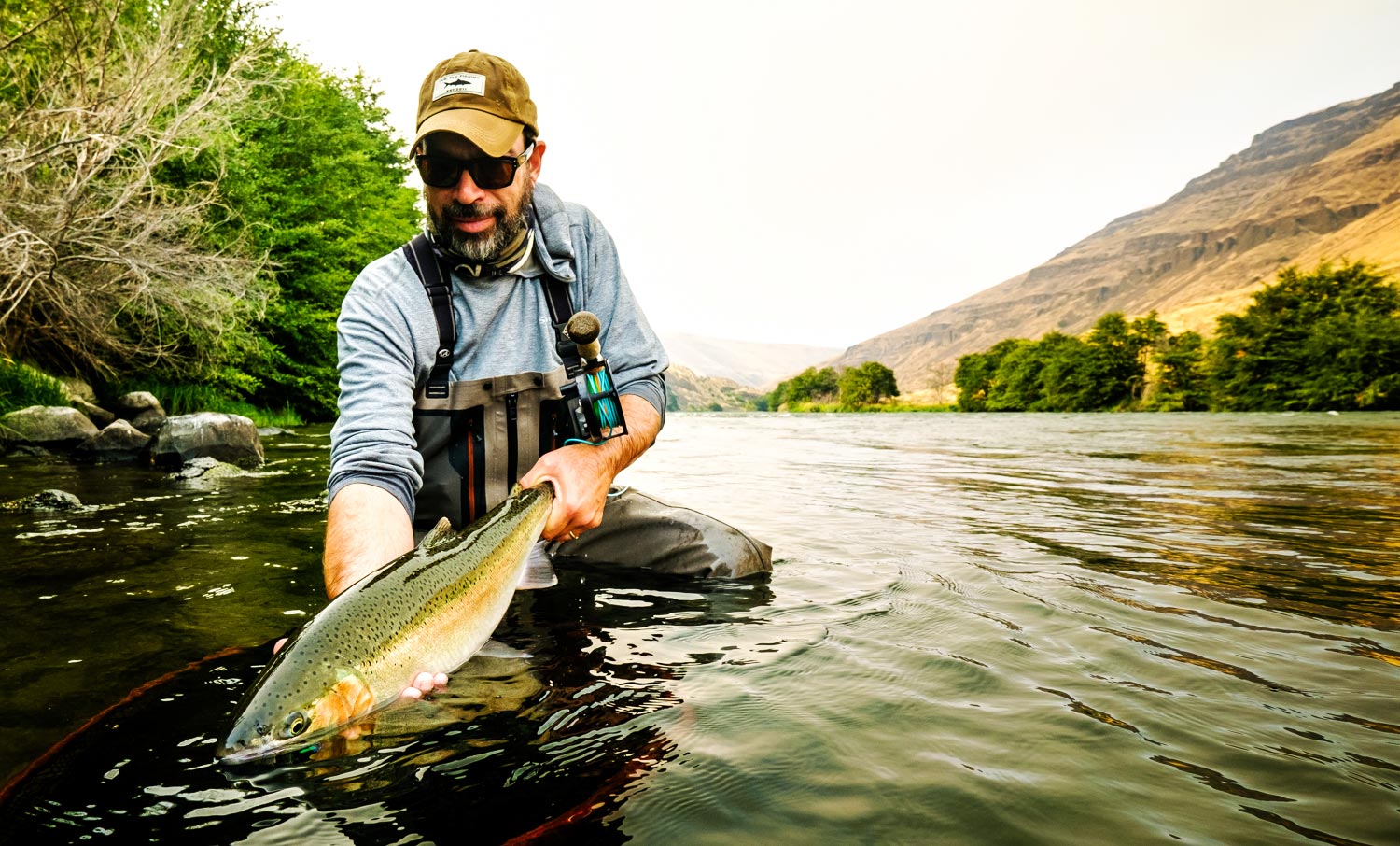By Louis Cahill
The Single Spey is one of the most efficient, and most overlooked, casts for the two-hand fly rod.
Like a lot of anglers who picked up the spey rod to target steelhead, much of my early fishing focused on Skagit techniques. I spent my time perfecting the Snap T and Double Spey in the standard and off shoulder forms and pretty much got by with that. Later I added a Snake Roll for when things are tight but for years the only time I used the Single Spey was when working out my head. As I spent more time fishing Scandi style lines and traditional flies, I realized I was missing out by not using the Single Spey. I also realized I had never really mastered it.
There are several good reasons to use the Single Spey over a cast with a waterborne anchor.
First, it’s just more efficient. There are fewer steps and less wasted motion than in Skagit casting. Skagit casting is great when you need to lift a heavy sink tip, but when you are fishing a floating line you don’t need all of that power. A Single Spey is requires less effort and saves you energy, so it’s less fatiguing.
It’s also much quicker. Not that we are out swinging flies because we are in a hurry, but it does get you through the run faster, which can be a good thing. If for instance you are trying to squeeze in one last run before dark, you’ll spend half the time casting with the Single Spey.
The Single Spey can also be a big help when the wind picks up. With a waterborne cast like a Double Spey, it’s hard to generate line speed without blowing your anchor. The slower pace of the cast allows the wind to carry your line, often making it hard to form a good D-loop and killing your cast before it’s even launched.
Since the Single Spey is a touch-and-go cast, it’s easy to step up the tempo while still making a good D-loop. It also allows you more line speed on the forward cast, which helps you land the line and leader straight. Even in the wind.
The more I use the Single Spey, the more applications I find for it. It may be one of the oldest two-hand casts but it has not outlived it’s usefulness. It’s worth taking the time to learn to do it well.
The real key to this cast is landing your anchor in the right spot at the right time. If you can do that, the rest comes easy. I’m not going to go into a drawn out description of the cast, because there is no point. No one teaches this cast better than Simon Gawesworth and we are fortunate that there is this great video of him which explains it better than I ever could. Once you’ve mastered the Single Spey, I’m sure you will find yourself using it all the time.
Watch this video featuring Simon Gawesworth and learn the Single Spey.
Louis Cahill Gink & Gasoline www.ginkandgasoline.com hookups@ginkandgasoline.com
 Sign Up For Our Weekly Newsletter!
Sign Up For Our Weekly Newsletter!

